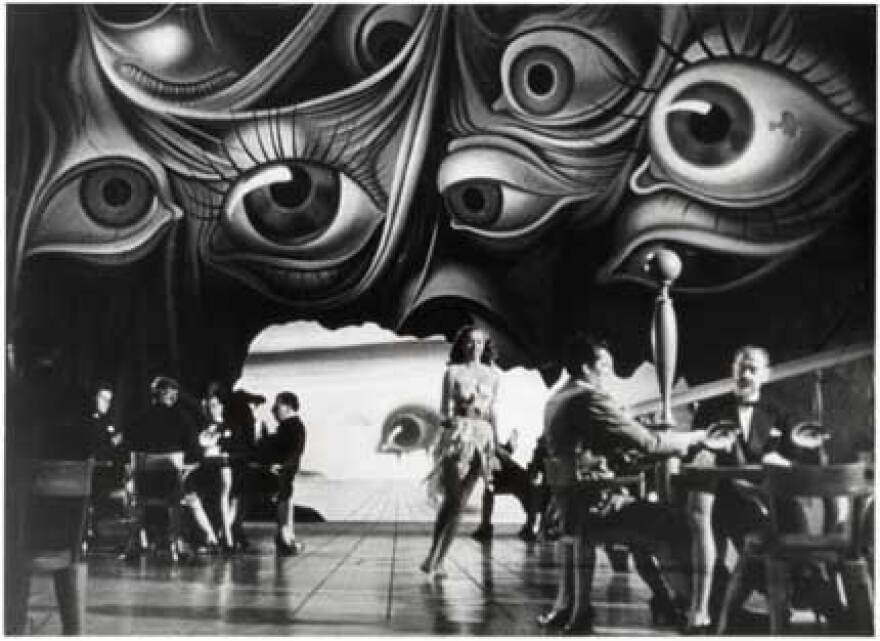Ingrid Bergman in Alfred Hitchcock’s “Spellbound” is in her element as Dr. Petersen; she is beautiful, remote and reticent -- which is to say, Scandinavian. A psychoanalyst at a prestigious institution, Bergman works with her patients and readies herself for the arrival of the new director of Green Manors, a Dr. Edwardes. The surprise is that no one expected a young and handsome Gregory Peck. That is unexpected; the second surprise is, maybe for the first time in her life, Bergman feels something akin to love for the young director. But something isn’t right. For someone so accomplished, Peck’s character suffers extreme mood shifts, and faints when confronted by something as normal as dark parallel lines on a white background. Clearly things are not as they should be and it is up to Bergman to break the boundary between love and professional conduct to solve the mystery of her new boss.
From 1945, “Spellbound” is from that unlikely pairing of director Alfred Hitchcock with mega-producer David O. Selznick. Nowadays, we film buffs ask who was the director of a picture, since they have the biggest impact on the quality of a film. But in the thirties and forties in Hollywood, it was the producer that largely shaped the production, and the director was often seen as a hired gun to get the movie shot. It is not surprising that two titanic egos would clash in such a partnership and they did, but Hitchcock tells us that the most flattering thing Mr. Selznick ever said about him—and it shows you the amount of control Selznick wielded—was that Selznick said Hitchcock was the "only director" he'd "trust” with a film.
“Spellbound” is a film of its time, and what a time it was. World War II is in its last year, and victory for the Allies is looking more and more certain. The intelligentsia of Europe is in the U.S. From Thomas Mann, Igor Stravinsky and surrealist Salvador Dalí, these artists are making themselves felt in American popular culture. To make the best use of the psychologically troubling “dream” sequence Dalí was hired to give the scenes a taste of his “paranoiac critical method” to the film. Here a large sleeping head and distorted items are used to create strangeness and unease. Another European displaced by war was composer MiklosRozsa, who adds to the orchestra an instrument familiar to fans of 1950sSci-Fi films; the Theremin. Its unearthly wail reinforces the psychological drama in the film. Rozsa won an Academy Award for this sound track. Ben Hecht and Angus MacPhail wrote the screenplay.

There are those that question the need for older productions - be they audio or film - to be released yet again on the newest medium. MGM has recently released a new Blu-ray of this movie, and while the sound and gorgeous music of Rozsa turn out quite well, the picture is a bit flat and grainy. It is not as good as, say, the restoration of “Metropolis,” filmed some twenty years earlier.
The disc includes commentary with Thomas Schatz and UT-Austin professor Charles Ramirez Berg, but the best extras are “Dreaming with Scissors, Surrealism and Salvador Dalí” where we get a sense of just how far Hitch and Dalí were willing to take us, and “Guilt by Association: Psychoanalyzing ‘Spellbound,’” which explores the new world of psychiatric treatment and American G.I.s returning home with what is now known as post-traumatic stress disorder. Very informative.
NOTE: Blu-raydiscs of “Rebecca” and “Notorious” are also newly available.


